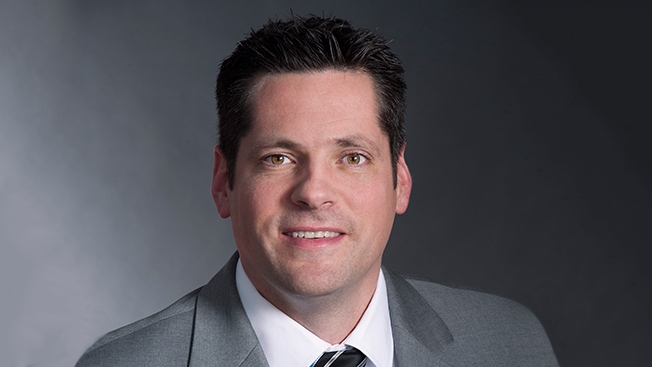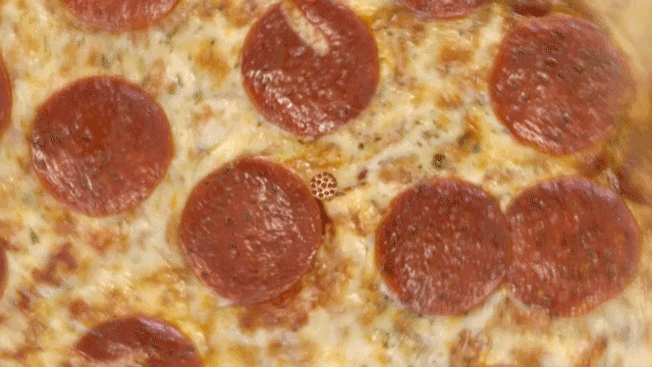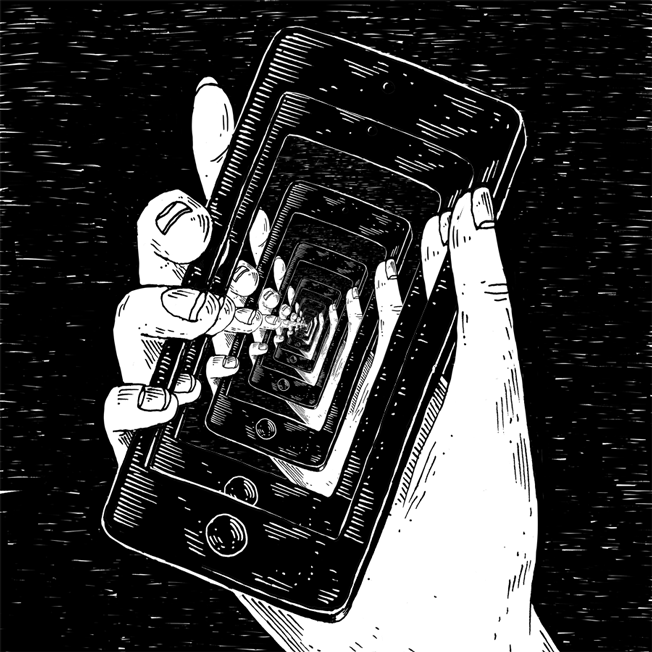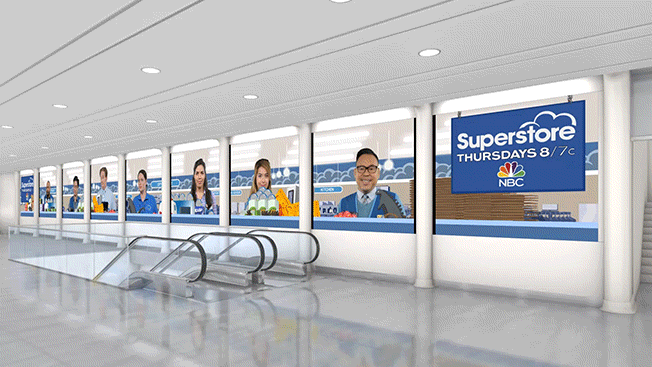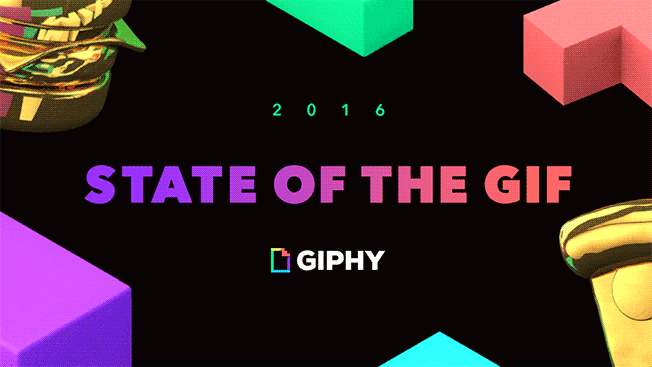Move over, emojis. As marketers look to navigate the changing digital video landscape, GIFs are becoming the go-to features for brands seeking better social-media engagement.
![]()
DiGiorno Pizza starts embracing GIFs on Twitter.
While the GIF has been around for years, brands have started betting on it as a bigger part of their social marketing as more platforms double down on short-form video. Just within the past few months, cinemagraphs have taken off on Instagram, Facebook is close to letting brands post GIFs, and Twitter rolled out autoplay video that loops GIFs in its news feed.
GIFs, which loop endlessly like Vine clips, let brands message with consumers while swapping out text for visuals—similar to emojis, memes and video.
"We are starting to see this behavior where people are using content and culture to communicate—they're not using words anymore," explained Adam Leibsohn, Giphy's chief operating officer. "When they're doing that, there's an opportunity for that culture to come from a brand."
To capitalize on that, companies like Giphy and Tumblr are building branded content on behalf of marketers while agencies beef up their own production studios and capabilities in house.
Paramount Pictures is an example of a company with a strong focus on GIFs. Thirty-one years after Arnold Schwarzenegger played the original Terminator, the film studio is working with Giphy's in-house creative team—called The Studio at Giphy—to promote this summer's Terminator Genisys movie.
Paramount took props and scenes from the movie—think the Terminator's hand or the famous motorcycle ride—and asked GIF artists to come up with six different posts leading up to the film's July 1 premiere. The campaign targets millennials and teens who may not be familiar with the original 1984 movie but have seen pictures of the film shared on social media.
"In terms of the animated GIF, we pay close attention to what content works on which platforms, so it's not as simple as throwing a 30- or 15-second spot up or even a quick video edit," said Megan Wahtera, svp of interactive marketing at Paramount Pictures.
Paramount is the latest brand to work with Giphy in building branded content. Over the past 18 months, the platform has quietly built up an in-house creative studio, working with more than a dozen marketers including KitKat, Bacardi and Toyota to make what it calls "branded vocabulary."
The Studio at Giphy helps with everything from creative briefs to advising brands on which types of GIFs will resonate best with people. A team of 28 staffers and a network of more than 300 GIF artists then whip up packages of branded content.
The average package contains 25 to 50 GIFs that brands then post on social media. While the content lives on brands' Giphy pages, the short clips are more like a library of content that can be posted to any social platform.
"We're building really basic elements of communication," Leibsohn said. "It's like an alphabet—if you have all the letters, you can make all the words."
Giphy's business has picked up over the last six months as more brands clamor for animated loops.
"We've got projects that are breaking almost every week at this point," Leibsohn explained. "We had to actually expand the studio, staff up and make the process faster to be able to produce more content."
Tumblr Goes All in on Branded Content
Meanwhile, Tumblr is banking on its reputation for making GIFs mainstream to win brands over.
Tumblr's Creatrs program is a similar concept to Giphy's branded content studio. It launched in January to pair up marketers with popular artists after brands tested it in 2014. Brands can work with the influencers to make videos, text and images for the platform, but the GIF remains the No. 1 piece of content that marketers want, said David Hayes, Tumblr's head of creative strategy.
Hayes declined to say how many campaigns it has run, but he did say the program is catching on with brands and agencies alike.
"We're now six months into 2015, and we've already done three times the number of campaigns that we did all of last year," he said. "If you take into account that 90 percent of all the content we're creating are animated GIFs, that speaks to how popular that content is on Tumblr."
That said, the Tumblr GIF program is evolving, and the team is advising brands to try out its different forms.
In April, Tumblr artist Anthony Samaniego plugged time-lapse video into a GIF for Coachella:
There are also cine-mosaics, which combine movie posters and silent TV spots. Lionsgate employed this tactic to build buzz around its You're Next horror movie:
Then there are recursive GIFs, which endlessly loop a video that collapses on itself. Take a look at how 20th Century Fox used it for the reboot of the classic horror flick Poltergeist:
Even though other forms of digital communication like emojis and emoticons vie for brands' attentions, Hayes argued that GIFs are better at connecting brands with consumers. "I think of the GIF as a more advanced form of the emoji that allows an everyday user to more specifically communicate what they mean because now they're not just communicating an emotion," he said.
The Case for More In-Agency Social Work
While a number of agencies have enlisted artists and major platforms to make GIFs for clients, others are beefing up their own digital practices to handle more work in house.
Six months ago, Resource/Ammirati was barely building any GIFs. Now animated loops make up 10 percent to 15 percent of the agency's social work for brands like DiGiorno Pizza and Tidy Cats.
For DiGiorno Pizza, the agency started experimenting with more visual tweets earlier this year after success with real-time text tweets.
"We were happily surprised that when we started to do GIFs, they got even higher engagement," said Luke Oppliger, director of social content at Resource/Ammirati. "We typically get a few hundred retweets and favorites, but we are seeing GIFs in the thousands."
The agency shoots video for the GIFs in its own studio with a small group of staffers. Since they require a bit of extra work, Resource/Ammirati recommends brands amplify looped video with paid ads.
"Because there's some effort and investment to create these, brands want to make sure that they're getting a really good return on their investment," Oppliger said. "We're definitely putting paid [media] behind these."
Brian Chin, digital associate creative director at Innocean, agreed that agencies can own the GIF-making process. Within the last 18 months, the Huntington Beach, Calif.-based company has staffed up a social newsroom that creates content on the fly.
"It's a potentially fleeting moment," he said. "The quicker you can get with the quality and output of these GIFs, the better."
And the more GIFs agencies produce, the more they are tweaking them.
Minneapolis-based Periscope (the agency, not the mobile livestreaming app) has been cranking out GIFs for Trolli during the past year, creating more than 250 loops that were primarily posted to Tumblr.
Each Trolli GIF puts the candy brand in strange situations (see example here). Last year, that meant building up to the weird moment before it happened. Now that it's regularly posting to Twitter and uploading GIFs as videos on Facebook, Periscope is rethinking the storytelling process with punchier creative.
"It used to be a longer time span that we could keep folks' attention and have something weird happen towards the end of the loop," said Bridget Jewell, community engagement strategist at Periscope. "Now, we have to have that happen in a shorter amount of time because attention span is less."
Indeed, cutting through the clutter with a single post is tough, which is why VaynerMedia and Mountain Dew are experimenting with publishing multiple animated loops simultaneously.
When Twitter launched autoplay video last week, Mountain Dew was one of the first to test it out, creating five GIFs that showed a flowing stream of blue soda.
Christine Ngo, Mountain Dew's digital brand manager, said they typically post at least 10 GIFs per month across all their social platforms.
"We're not just looking at one GIF as a way of storytelling anymore," Ngo said. "We're thinking about how multiple GIFs can work together to tell a bigger story."
Branded Artists
Short-form video and GIFs have also changed how artists reshape their work for brands.
Romain Laurent, for example, has made GIFs for Gap, L'Oreal and Starbucks, but he is a photographer and director by trade.
When Laurent gets requests to shoot a print and video campaigns, brands like Reebok now ask that he throw in social content, too.
The looped videos are even working their way into Laurent's directorial work. He said he's started making little films with cinemagraph-like qualities.
"The GIF part of my work is a side project that grew into something bigger than I thought it would be," Laurent said. "A year ago, it was one-off things, but it's true that, lately—especially this year—I would say I get two to three requests per month. It feels like it's become more integrated into advertising."
 Tech firm Giphy this morning tweeted that it had launched a Facebook GIFs product, and the digerati immediately buzzed with interest. Within a couple of hours, The Gap posted one of the first branded GIFs on the hugely popular social media platform and a handful of other brands are readying theirs for release shortly, according to sources.
Tech firm Giphy this morning tweeted that it had launched a Facebook GIFs product, and the digerati immediately buzzed with interest. Within a couple of hours, The Gap posted one of the first branded GIFs on the hugely popular social media platform and a handful of other brands are readying theirs for release shortly, according to sources.




